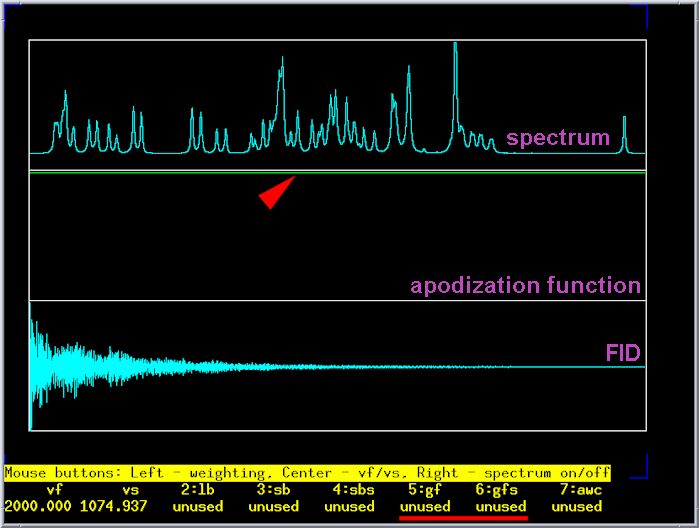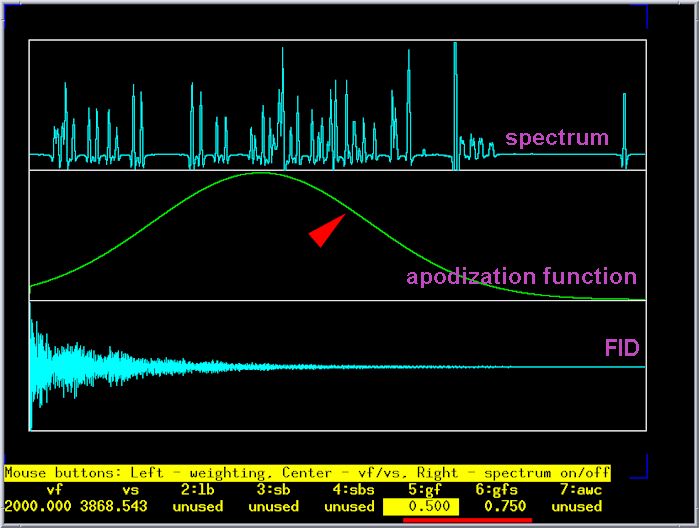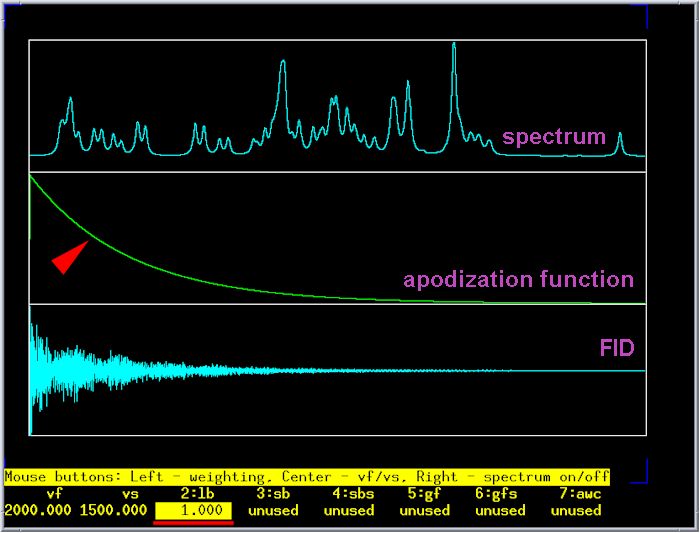
| Examples for interactive adjustment of
apodization (weighting) function The four examples shown here represent a different section of the spectra shown in FAQ 99-09.1. They have been chosen to show the effect on a more complex spectral region with some overlap problems. The line widths shown were measured in the doublet at 1.205 ppm in the spectrum shown in FAQ 99-09.1. Enter the interactive display to adjust window functions by typing wti on the command line. To make the spectrum visible in the wti display (top third of the panel) right click in the spectrum box and then use the middle mouse button to change the vertical scale. Any part of a spectrum can be chosen to examine the effect of weighting functions but the desired expansion has to be chosen before going into the wti display. Once in here it cannot be changed. gf and gfs form a parameter pair (Gaussian function as shown
in examples B and C), sb and sbs form another pair (sine bell). gf
and sb define the width of the
respective functions, gfs
and sbs the shift of the
functions: see the difference between B) and C) where the width is the same but the shift
to the right is stronger in C). Do not mix and match several apodization functions. |
A) straight FT, no weighting function used, meaning neither resolution nor sensitivity enhanced: natural line width is 1.2 Hz

B) slight resolution enhancement (gf=0.5, gfs=0.5): line width 1.0 Hz

C) quite strong resolution enhancement (gf=0.5, gfs=0.75): line width 0.7 Hz

D) line broadening (lb=1.0): line width 2.3 Hz
